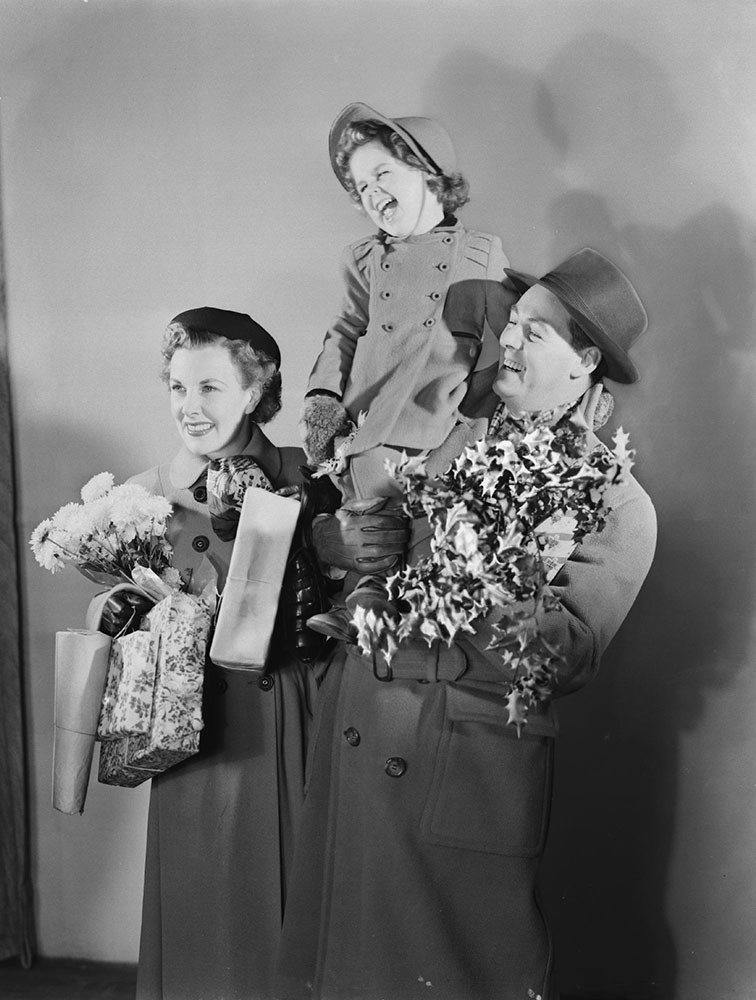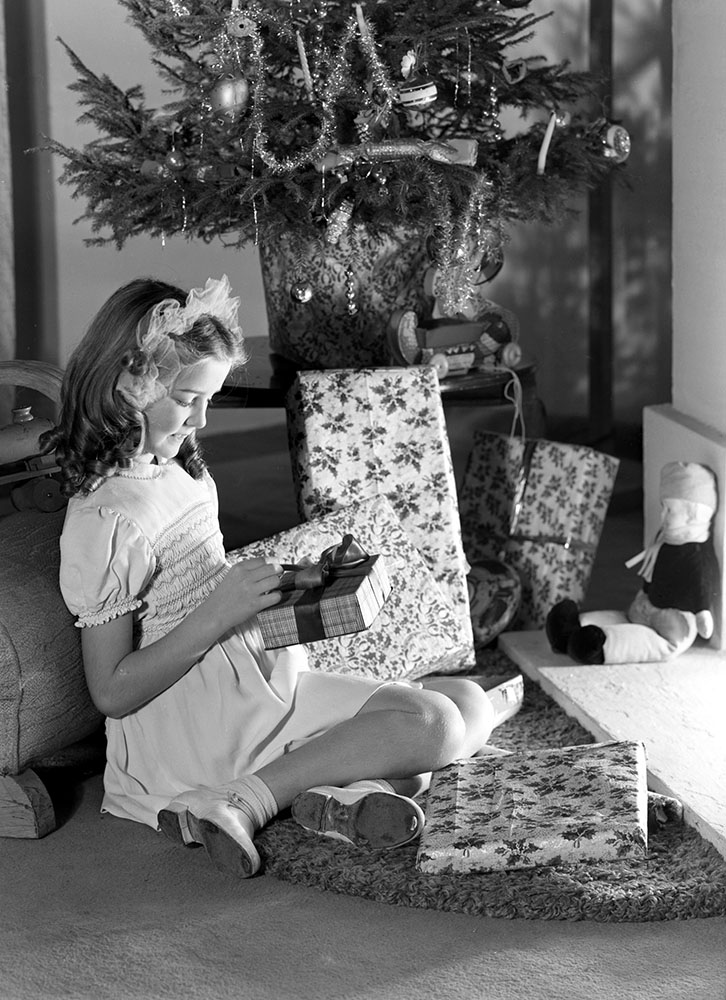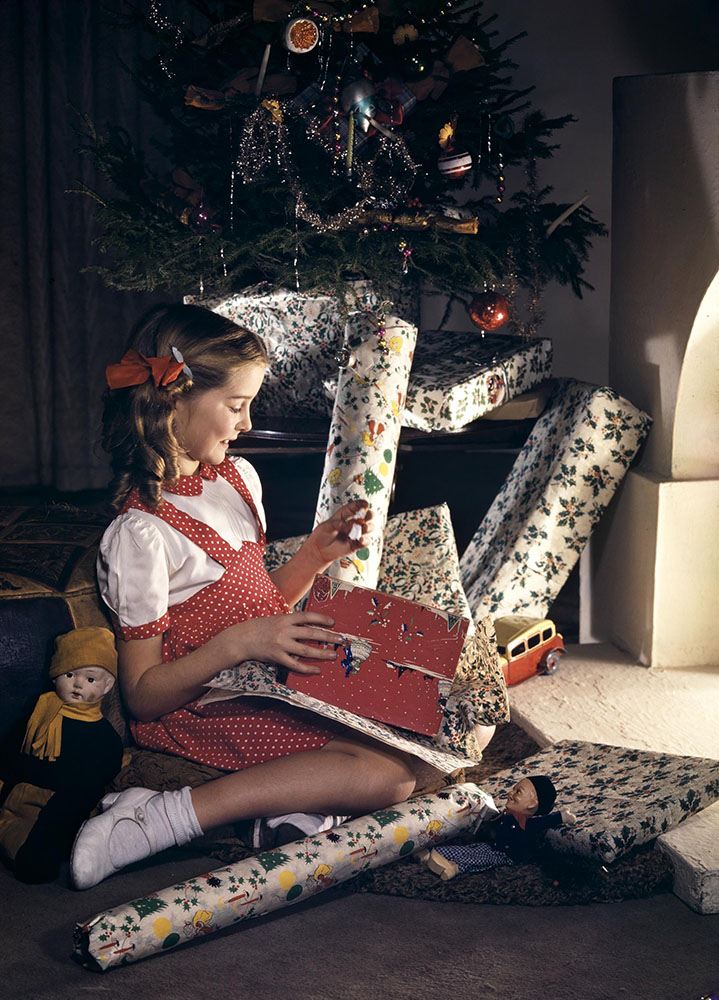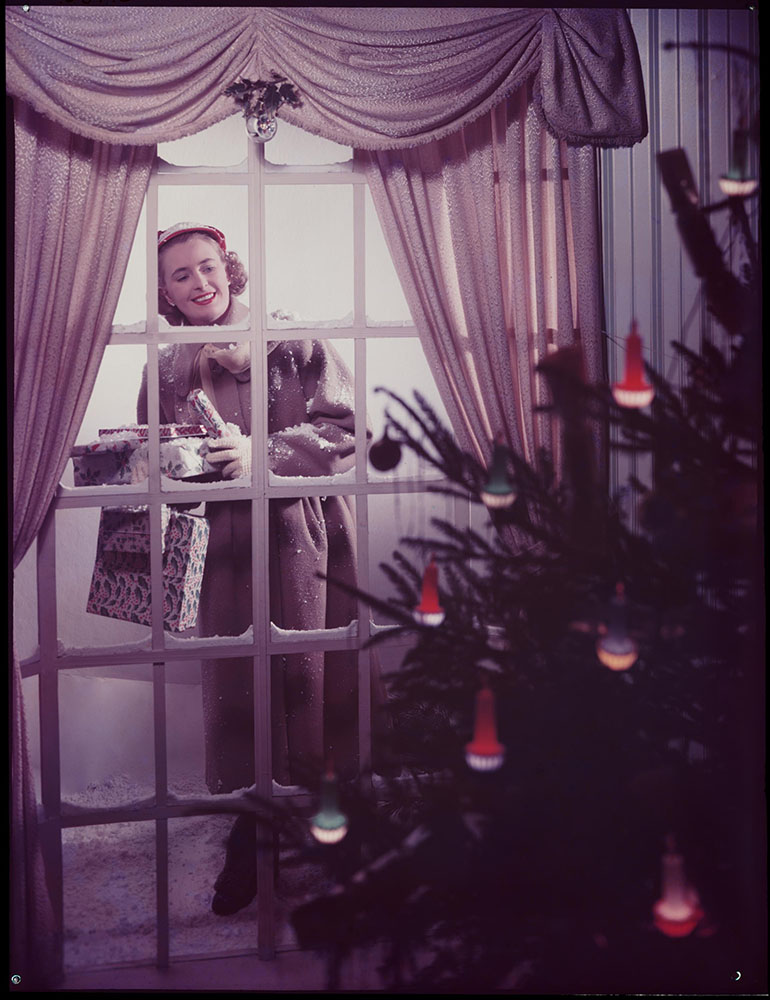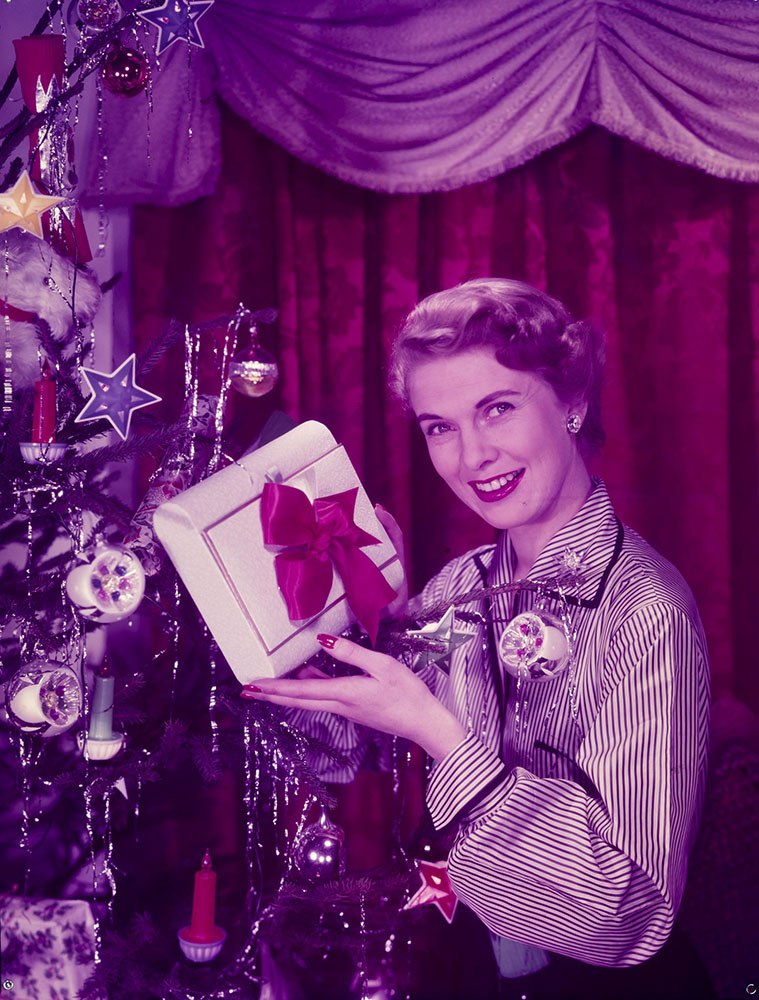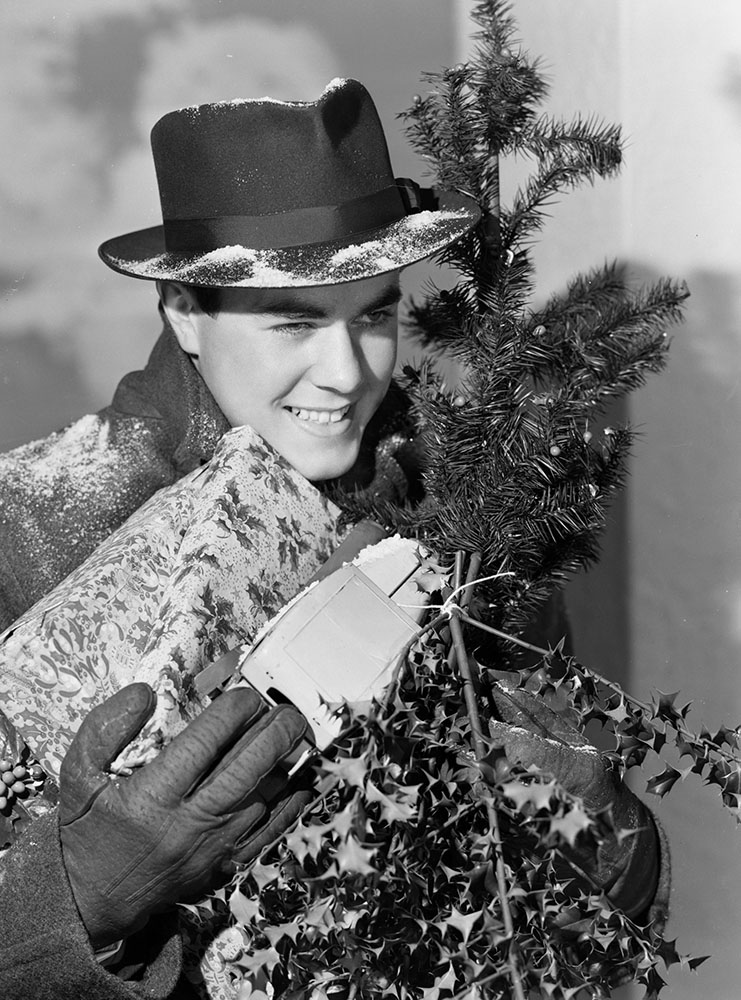So Christmas is coming, and what better to get us into the festive mood than a stack of advertising images encouraging us to buy products—or maybe even buy a lifestyle?

Examples of the kind of Christmas advertising imagery used in the 1930s, 40s and 50s can be found in the museum’s collection among the archive of Photographic Advertising Ltd, a company that produced thousands of stock images over several decades.
Today, we might be more familiar with these kind of images being used in an ironic or comedic way on greetings cards, but the generic nature of these images did at one time make them potentially useful to a very wide range of companies in helping to sell their products.
The photographs particularly focused on the ‘psychological benefits’ of products or services; they were offered as a means of giving satisfaction or enhancing status—hence the big smiles on the faces of these models.
Photographic Advertising Ltd operated between 1926 and 1977. It was at its height in the 1930s, and claimed in 1930 to ‘have the largest studios in Britain devoted solely to photography for advertising purposes’.
The chief photographer and managing director George Mewes had been a photojournalist and a shareholder in a film production company, and both of these aesthetics influenced the Photographic Advertising style, producing the kind of images which readers would be familiar with from newspapers and movies.
They did produce commission work also, but most of the archive held at the museum is the stock library—the kind of images which rely on established visuals and a conventional style. A particular house style was created, demonstrated both by the images and also that the works were never credited to a named photographer but always to PA, maintaining a strong corporate identity.
The cinematic quality of their images—many of them could almost be stills from classic Hollywood films—brought favourable comparisons in the advertising press:
‘…advertising photographic studios resemble miniature Hollywoods, the camera equipment, the sets, the complicated lighting systems, the crowds of actors make the ordinary visitor think they have strayed into a full-blown film studio.’ Advertising Display, May 1930
High levels of cinema attendance meant that audiences were able to understand these images easily and so receive the messages that the advertisers and their products were sending. This often meant that traditional gender roles were reinforced and somewhat stereotypical depictions of perfect nuclear families were common.
Large close-ups of faces and other techniques reminiscent of Hollywood were popular—which for Christmas images often meant smiling and/or expectant faces. Photographic Advertising aimed to produce images which not only showed emotions but also produced emotions in the viewer to create a narrative moment which ultimately would lead to the viewer buying the product.
By using images of desirable lifestyles, advertisers sought to make it appear as though their products were central to achieving that lifestyle. To a degree, these kind of images contributed to creating the depiction of the ‘perfect’ Christmas which still persist to this day… as do the pressures that can go along with trying to achieve it.
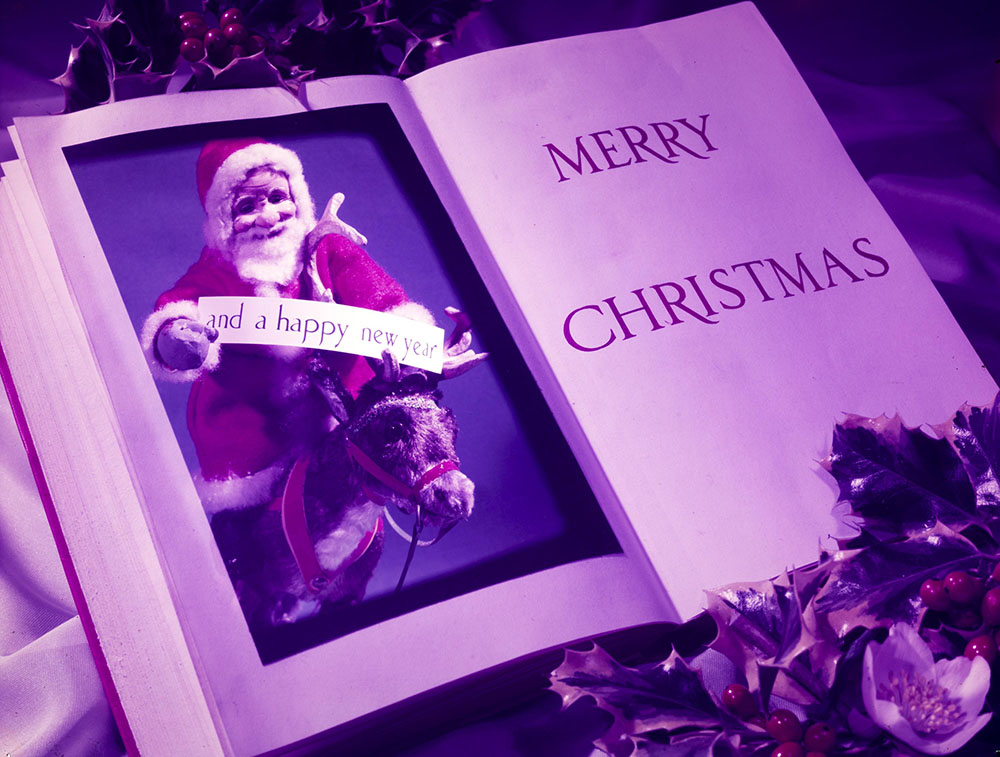
Further reading: John Hewitt and Helen Wilkinson, Selling the Image: the work of Photographic Advertising Limited, 1996

